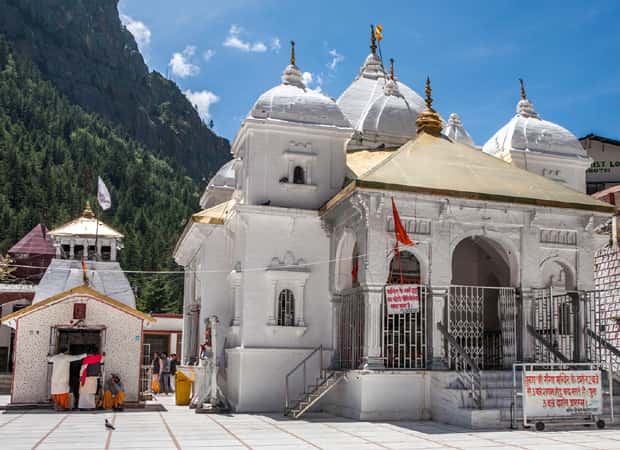 Gangotri
Gangotri
 Opening Dates
Opening Dates

30 April 2025 to 22 Oct 2025 (tentative)

Every year, the Gangotri Temple opens on Akshaya Tritiya, which is a holy day that falls in the last week of April or the first week of May. Priests look at the Hindu calendar to see when the Gangotri pilgrimage season officially starts on this day. The temple is closed throughout winter when it snows a lot. People can still pray to the Goddess Ganga idol by moving it to the village of Mukhba, which is close to Harsil. The opening ceremony is a huge religious occasion with special rituals, Vedic chants, and decorations for the temple. Priests, locals, and pilgrims all go to it. The temple is open until Diwali, when it closes for the winter. There are poojas, darshans, and even evening aartis every day that the temple is open. Before they go, pilgrims should find out the exact times when the location opens and shuts, since these times change a lot from year to year. Many people who follow this religion believe that going on the first day will bring them good luck for the rest of their lives. There is constantly spiritual, cultural, and religious activity going on from the time the doors open until they close. This period is the best time to visit Gangotri.
Starts on Akshaya Tritiya: The Gangotri Temple opens on Akshaya Tritiya, a holy day in the Hindu calendar that falls in April or May. Every year, priests use traditional panchangs and religious ceremonies to pick the day.
Spiritual Importance of Opening Day: Many people think that the first day of darshan is really lucky. People who go to the temple on this day think they will gain many blessings and spiritual good luck that will endure all year.
Winter Closure and Idol Relocation: The temple is closed on Diwali because there is too much snow. A ceremony transfers the Goddess Ganga statue to the village of Mukhba. In the winter, there is a separate temple where people pray.
Opening Ceremony Highlights: When the temple opens again, it will be decked with flowers, rituals, and vedic chanting. During a vibrant spiritual celebration, many priests, devotees, and local residents gather to witness this sacred event.
Darshan and Daily Poojas Begin: The daily rituals start up again after the temple opens. These are the morning pooja, the midday offerings, and the evening aartis. Devotees can also book special poojas during the open months.
Important Dates Vary Yearly: Every year, the day of the opening is different. Before pilgrims make plans for their travel, they should verify official updates to make sure they may book a place to stay and go to religious festivities.
Peak Pilgrimage Period Begins: Many people from all across India go to Gangotri between Akshaya Tritiya and Diwali. This time of year in the Himalayas is full of devotion, building community, and achieving spiritual fulfillment.
| Gangotri Opening Date of 2026 | Gangotri Closing Date of 2026 |
|---|---|
| 30 April 2025 | 22 Oct 2025 (tentative) |
| Gangotri Facts | |
|---|---|
| Area | 3 sq kms |
| Altitude | 3048 mts |
| District | Uttarkashi |
| State | Uttrakhand |
| Season | April to Jun, Sep to Nov |
| Famous for | Origin of River Ganga |
| Pincode | 249137 |
| STD Code | 01381 |
